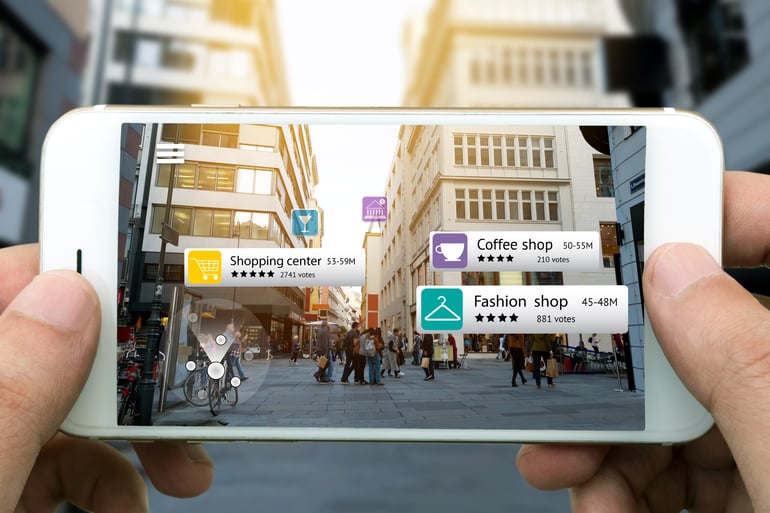Augmented Reality and Virtual Reality are two hot buzzwords in the IT and technology space. The similarity in names does cause some confusion, however, as some mistake them for the same technology despite being vastly different. So how can you tell the difference between the two?
Virtual reality is not a new technology. The concept has been around since at least the 19th century, but becoming much more well known some forty years later. The first example of virtual reality as we know of it today was the creation of the Sensorama in 1962, a theater that would stimulate four of the senses (versus just sight and sound). It was intended to fully immerse someone in the environment they were in, offering scents, vibrations, and a 3D display.
A very basic form of augmented reality came along shortly after in 1968, the first recorded usage of a computer to generate an image in the real world. In the nearly fifty years since then, both augmented and virtual reality have expanded their usability and capabilities tremendously.
What is Virtual Reality?
In essence, virtual reality allows you to become immersed into a completely new world through complex computer processing, imagery, and interaction. Whether you want to perform a certain task (like cooking or performing surgery) or explore a new underwater world, VR helps make your imagination come to life.
In technical terms, virtual reality is a computer-generated simulation or recreation of an environment or circumstance. It can be interacted with in a realistic way by utilizing specialized hardware, usually a headseat and/or hand-held controls. While being in this simulated world you are able to manipulate objects or perform actions in real-time. This is exceptionally helpful for dangerous tasks like learning how to fly an airplane or training new surgeons on how to properly perform surgery.
Companies Using Virtual Reality
Virtual reality has surprisingly practical uses in many industries. Apart from the examples above, here are some examples of what companies are using VR for:
- Some colleges and universities are creating virtual tours of their campuses, where real estate companies are creating tours of homes for sale
- Theme parks create simulated roller coaster rides and adventures with VR
- Racing company Formula E has computer-generated recreations of their races you can enjoy with a VR headset
- Home improvement giant Lowe's created a virtual room where you can get a mock-up of any renovations you want before you commit to them
- Toyota created a VR app to raise awareness about distracted driving in teens

What is Augmented Reality?
While sharing some similarities with virtual reality, augmented reality can be considered much less "invasive". Augmented reality will take the existing environment - whether it be your office, home, or in nature - and maniupulate it accordingly. Pokémon GO is an example of augmented reality: you can catch a Weedle on your desk or a Magikarp down by the river.
Augmented reality apps are written in specific programs that allow the developer to create complex animations or display digital information and link them into the real world via a device's camera, and often, the device's GPS.
AR was developed to enhance your existing world by overlaying digital information against the real world, not replace it entirely. Think about when you watch football: have you ever noticed the yellow "first down line" that seems to appear out of thin air? It's also a form of augmented reality.
Companies Using Augmented Reality
Along with helping viewers better view and understand football, augmented reality has been developed to be the answer to thousands of problems. It is practical for almost any industry
- Beauty boutique Sephora uses an app that lets you try certain looks on for size without even leaving home
- Swedish furniture maker IKEA lets you view furniture in your own home directly from their catalogue
- A fire safety service created Escape My House, a simulator that literally puts you face to face with flames to try to learn how to safely escape a house fire
- Try on clothes without having to get undressed with virtual fitting rooms
- Insurance companies can walk around damaged cars and gather information about the damage involved and the cost of repairs
Does your company use either augmented reality or virtual reality? What do you do? How does it help or hamper your existing work?
















